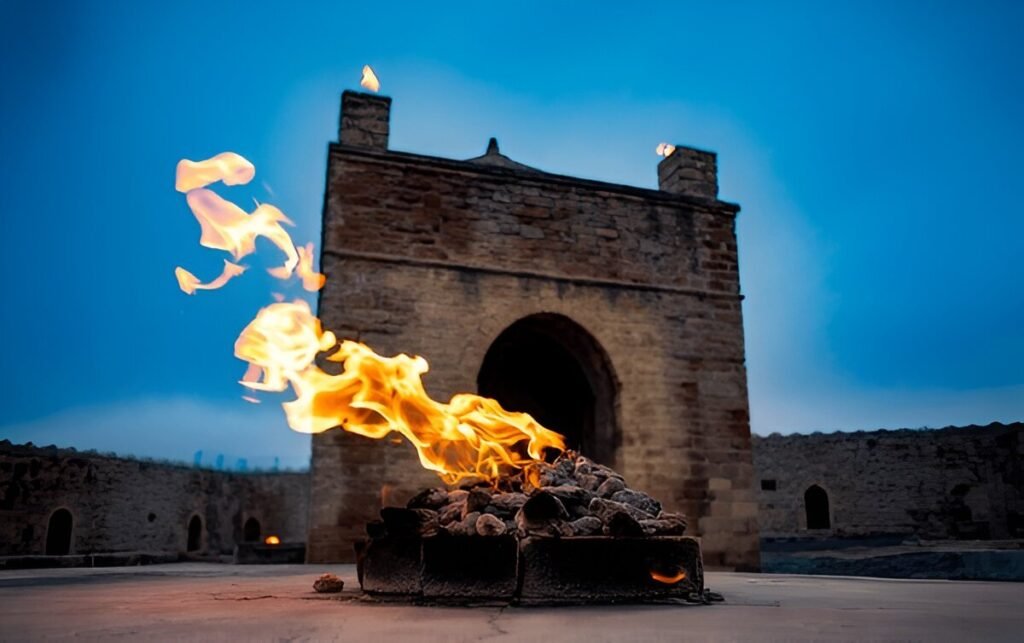Introduction
Nestled on the outskirts of Baku, Azerbaijan, the Fire Temple of Ateshgah stands as a testament to the country’s rich spiritual and cultural history. Known for its unique architectural design and deep connection to the ancient religious practices of Zoroastrianism, Ateshgah has become one of Azerbaijan’s most intriguing and visited landmarks. The temple’s historical significance, mystical ambiance, and connection to fire worship make it an essential destination for anyone interested in the region’s ancient heritage.
In this article, we will explore the history of the Ateshgah Fire Temple, its cultural and religious significance, the role of fire in the temple’s rituals, and why this extraordinary site continues to captivate visitors from around the world.
A Glimpse into Zoroastrianism
Before delving into the history of the Ateshgah Fire Temple, it is important to understand the religious context in which it was built. The Zoroastrian faith, one of the world’s oldest monotheistic religions, originated in ancient Persia (modern-day Iran) around 3,500 years ago. Founded by the prophet Zoroaster (or Zarathustra), Zoroastrianism emphasizes the worship of a single god, Ahura Mazda, and the cosmic struggle between good and evil.
Central to Zoroastrianism is the element of fire, which symbolizes purity, truth, and the divine presence of Ahura Mazda. Fire was considered sacred, and its worship was an integral part of Zoroastrian rituals. Zoroastrians believed that fire had the power to purify the soul and drive away evil spirits. As a result, many temples were constructed with an eternal flame burning at their core, where worshippers would gather to perform prayers and ceremonies.
The Birth of the Ateshgah Fire Temple
The Ateshgah Fire Temple, located in the Surakhani district of Baku, dates back to the 17th century, although the site’s spiritual roots can be traced to much earlier periods. The region of present-day Azerbaijan has long been a center of Zoroastrian worship, owing to its proximity to ancient Persia. In fact, the land’s geological conditions, including natural gas deposits, have made it a place of mystical importance for centuries.
According to historical records, the site where Ateshgah stands today was originally used as a Zoroastrian fire temple as early as the 6th century. The natural gas that bubbles to the surface from the region’s underground reserves made it a fitting place for the practice of fire worship, as flames could be seen naturally emanating from the earth, creating a sense of divine presence.
However, the present-day structure of the Ateshgah Fire Temple was built during the Safavid period in the 17th century. It is believed that the temple was constructed as a place of worship for the Zoroastrian and Hindu communities who lived in the region at the time. The temple’s location was carefully chosen to take advantage of the natural gas vents, which provided a constant flame that could be used in rituals and ceremonies.
Architectural Design of the Ateshgah Fire Temple
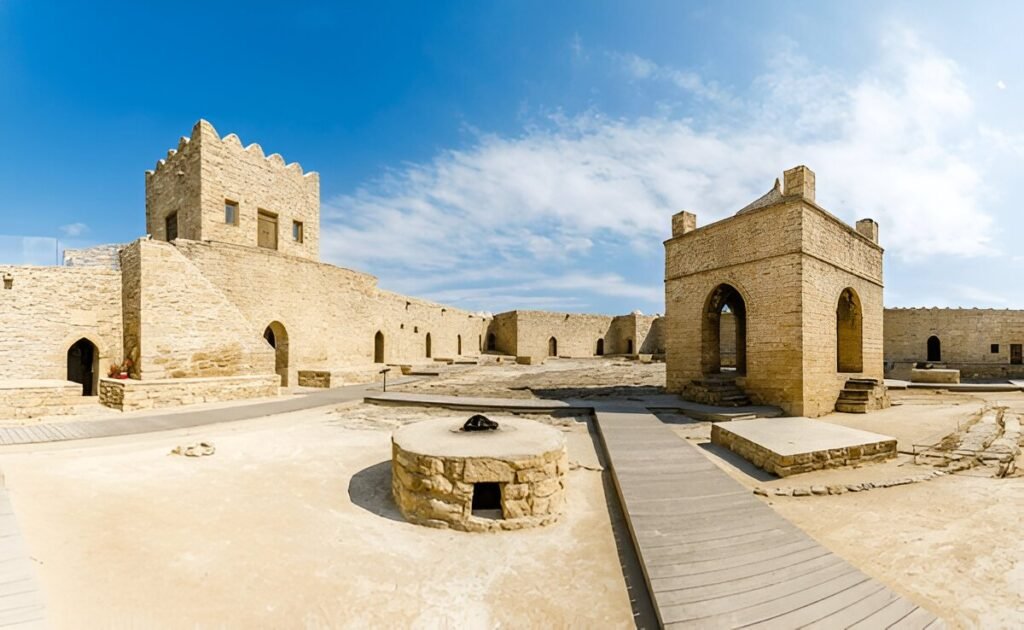
The Ateshgah Fire Temple is an architectural marvel that showcases the fusion of religious and cultural influences. The structure is a rectangular courtyard surrounded by a high wall, with a central altar featuring a flame that burns perpetually. The temple’s design reflects the traditional Persian style, incorporating elements of Zoroastrian, Hindu, and Islamic architecture.
At the center of the temple stands a stone platform, where the eternal flame once burned. The flames were believed to have been fed by natural gas vents located underneath the temple. In ancient times, the flames would have been visible from afar, symbolizing the divine presence of fire and inviting worshippers to gather in prayer and meditation.
The temple features a series of small cells and rooms surrounding the central courtyard, which were used by the priests and devotees who visited the site. The rooms also served as spaces for meditation, religious ceremonies, and spiritual reflection. On the walls of the temple, visitors can find inscriptions in Farsi, Arabic, and Sanskrit, highlighting the diverse religious and cultural influences that have shaped the temple’s history.
One of the most remarkable features of the Ateshgah Fire Temple is the range of religious symbols that adorn the site. The combination of Zoroastrian, Hindu, and Islamic motifs speaks to the harmonious coexistence of different religious communities in the region throughout history.
The Role of Fire in Ateshgah’s Rituals
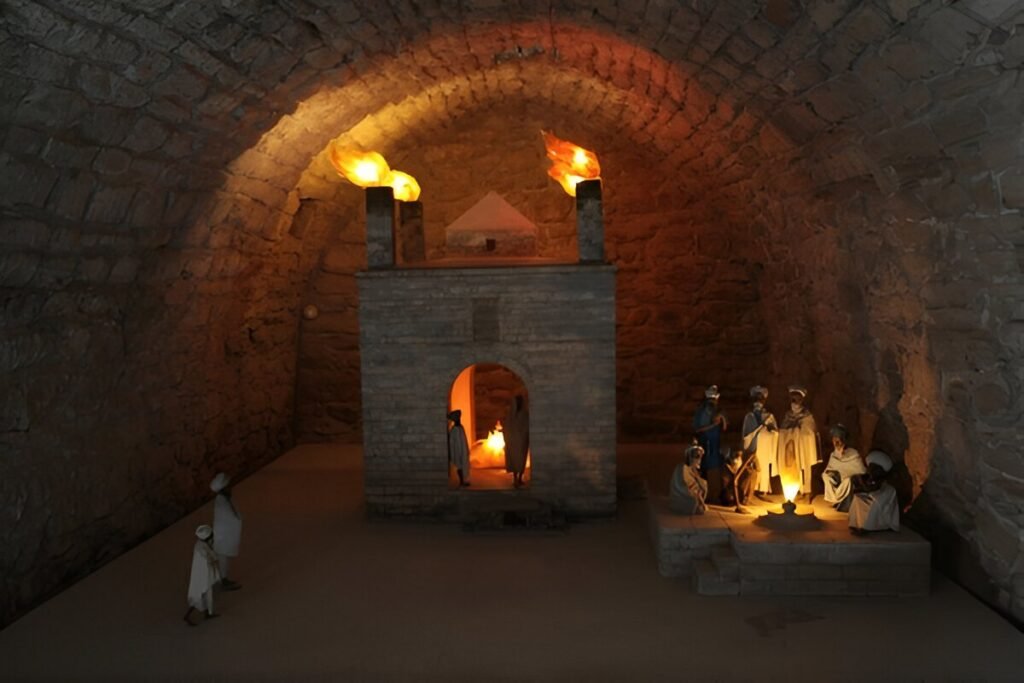
Fire played a central role in the rituals performed at the Ateshgah Fire Temple. According to Zoroastrian beliefs, fire was considered a symbol of the divine, representing the eternal flame of Ahura Mazda. It was thought that the fire held the power to purify the soul and protect individuals from evil forces.
Worshippers would gather at the temple to offer prayers, incense, and sacrifices to the sacred flames. The fire was believed to serve as a bridge between the earthly and divine realms, allowing the worshippers to communicate with the higher powers. The eternal flame at the center of the temple was maintained by priests, who were responsible for ensuring that the fire never extinguished. The flame was considered so sacred that it was guarded with great reverence, and it was thought to have the power to purify the surrounding environment.
In addition to Zoroastrian ceremonies, the Ateshgah Fire Temple was also used by Hindu pilgrims who made their way to Baku to pay homage to their own gods. Hindu worshippers believed that the flame represented the divine presence of Agni, the Hindu god of fire. As a result, the temple became a shared space where both Zoroastrians and Hindus could engage in their respective fire rituals, fostering a sense of religious and cultural harmony.
The Decline and Rediscovery of the Ateshgah Fire Temple
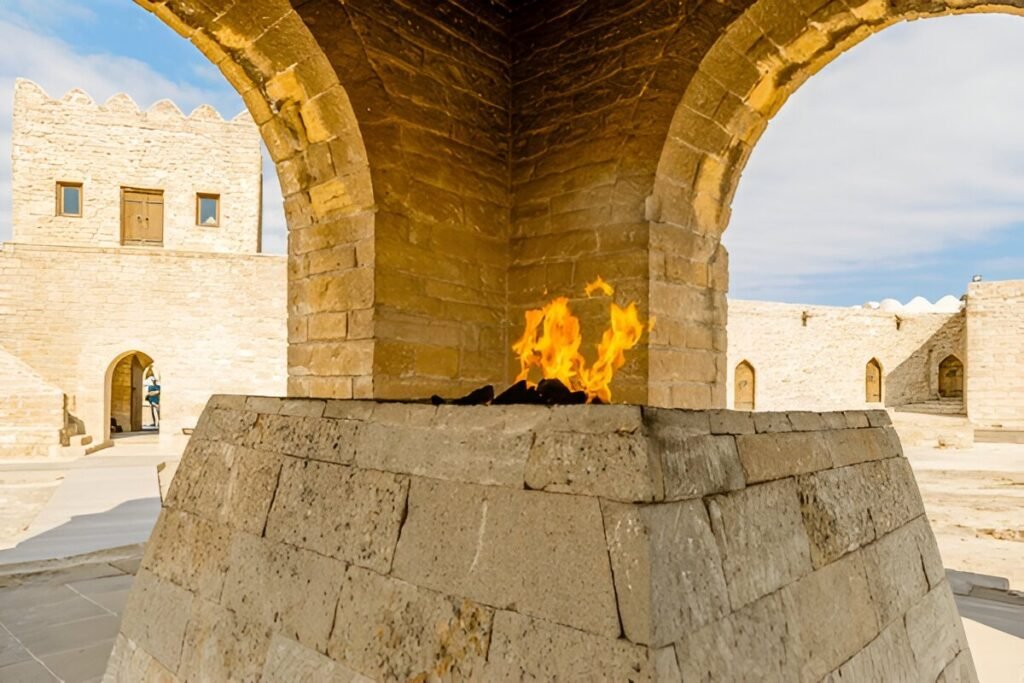
The Ateshgah Fire Temple fell into disuse in the late 18th century as the region underwent significant changes under the influence of the Russian Empire and later the Soviet Union. With the decline of Zoroastrianism and the rise of Islam and Christianity, many fire temples in the region were abandoned or repurposed for other uses. Ateshgah was left to deteriorate over the centuries, and the flames that once burned at its core were extinguished.
However, the historical significance of the site was rediscovered in the 19th century when explorers and archaeologists began to investigate the ruins of ancient temples in Azerbaijan. The Ateshgah Fire Temple was restored in the early 20th century, and efforts were made to preserve its cultural and religious heritage.
Today, the Ateshgah Fire Temple is one of the most popular tourist attractions in Azerbaijan. It is a museum that offers visitors a chance to learn about the country’s ancient religious traditions, including Zoroastrianism and fire worship, while also exploring the broader history of Azerbaijan’s cultural development.
Visiting the Ateshgah Fire Temple Today
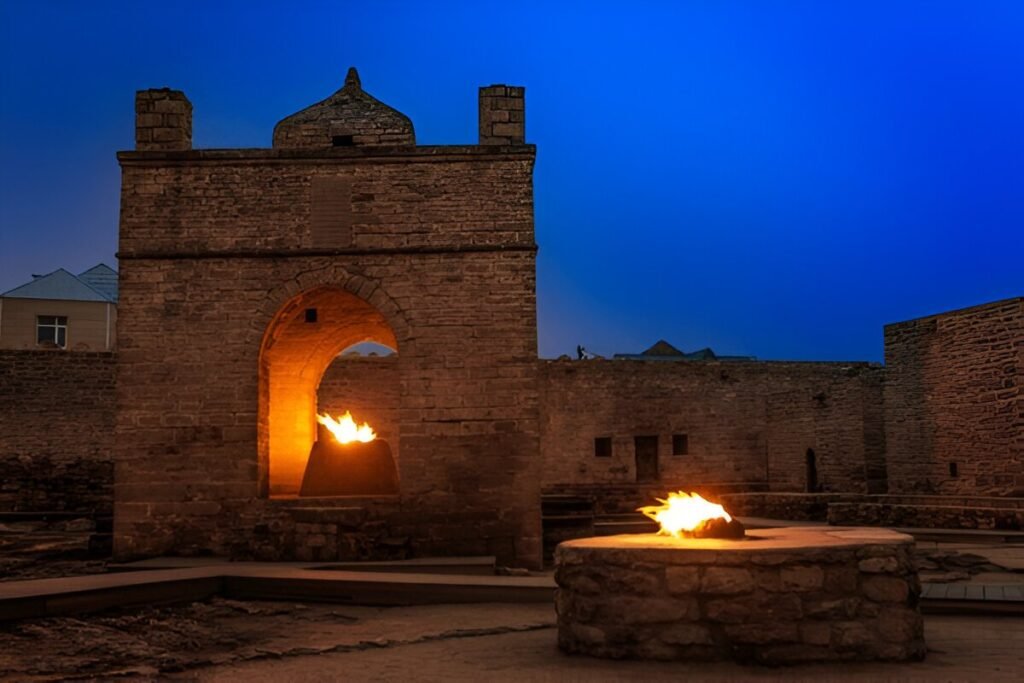
Visitors to the Ateshgah Fire Temple will be struck by the peaceful atmosphere and the sense of spiritual reverence that still pervades the site. The temple is a popular destination for both history enthusiasts and spiritual seekers, offering a rare opportunity to connect with an ancient religious tradition that has shaped the cultural landscape of Azerbaijan.
The museum at the temple provides detailed information about the history of the site, the rituals performed there, and the various religious communities that have worshipped at the temple over the centuries. Visitors can also explore the temple’s surrounding courtyard, where the central flame once burned, and view the inscriptions and artifacts that tell the story of the temple’s rich spiritual heritage.
For those interested in learning more about the role of fire in Zoroastrianism and its significance in ancient rituals, the Ateshgah Fire Temple offers a rare and enlightening glimpse into a world that existed thousands of years ago, yet continues to resonate in the spiritual practices of modern Azerbaijan.
Conclusion:
The Ateshgah Fire Temple is much more than just a historical monument—it is a symbol of Azerbaijan’s spiritual and cultural identity, connecting the country to its ancient past and offering a window into the religious practices of the region’s earliest inhabitants. With its rich history, mystical ambiance, and stunning architecture, the temple stands as a testament to the power of fire in shaping religious beliefs and rituals.
As a place where different cultures and religious communities once gathered in shared worship, the Ateshgah Fire Temple represents the cultural melting pot that has long defined Azerbaijan’s history. Today, it remains a cherished part of Azerbaijan’s heritage, offering visitors a profound and memorable experience that bridges the gap between the past and present.



